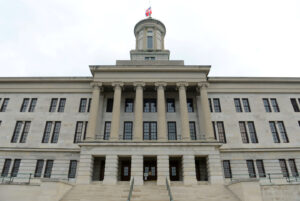Report: Local tax dollars fund majority of Tennessee K-12 school capital projects
(The Center Square) – During legislative budget negotiations earlier this year, Tennessee Senate Finance Committee Chairman Bo Watson, R-Hixson, was asked about the Legislature removing $200…

(The Center Square) – During legislative budget negotiations earlier this year, Tennessee Senate Finance Committee Chairman Bo Watson, R-Hixson, was asked about the Legislature removing $200 million from Gov. Bill Lee’s proposed budget amendment that was intended to relocate school buildings from flood-prone areas.
Watson responded that the Tennessee Legislature doesn’t want to get into a policy of building schools after Lee had made a point that it was important that the state did pay for those schools.
“I went to Waverly, Tennessee after the devastating floods late last year,” Lee said during his State of the State speech. “The tragedy, the heartache, the loss was hard to take in. I walked into the elementary school where the water rose to four feet in 10 minutes. I saw desks and backpacks and books piled up against the door where water rushed out. If the Waverly flood happened on Friday instead of Saturday, we would be mourning the loss of hundreds of Tennessee children.
“I am proposing one-time funding to ensure that no student in Tennessee attends a public school located in a flood zone.”
The funding was not approved but a new report shows that the policy Watson was referring to is consistent with Tennessee’s recent past. The Tennessee Comptroller’s Office report showed that the majority of capital funding for local school projects is funded by local governments.
In the 2019-20 data that was examined, local governments spent $2 billion on land, building, construction and renovation along with parking lots, athletic fields, buses and school furnishings and playground equipment.
Meanwhile, the state sent $503 million for schools in that same fiscal period through Basic Education Program that includes items such as a stipend for fast-growing schools.
“Major capital projects can require large, nonrecurring expenditures and are usually considered separately from schools’ day-to-day spending on instruction, support services, student transportation, and the like,” the report said. “Capital expenditures and related debt payments for capital projects are commonly not included in measures of education spending per pupil at either the federal or state level due to their nonrecurring nature.
“For example, buying land and constructing a new school is generally not an activity repeated every year and does not have to be budgeted for annually the same way that salaries for teachers and gas for school buses do.”
The data used for the study included the Comptrollers’ financial reporting database, which included audits of 89 county school districts.
The office also conducted direct interviews of school district officials and used state growth data to determine how student enrollment growth impacted spending.
The data was then broken into categories with roughly $1 billion spent on capital projects, between $685 million and $693 million spent on debt service for projects, between $125 million and $141 million spent on regular capital outlays included building costs and $195 million spent on equipment and furnishings throughout the state during 2019-2020.
In one example, the report said “In one city school district, the school district is directly funding an addition to a middle school, while a new elementary school will be primarily funded by the local government. The local government borrowed funds on the district’s behalf for a new administrative building, and the district will transfer its funds to the city to cover debt service over 12 years.”
Of the $678.5 million in capital projects that year in the comptrollers’ database, $379 million of the spending was a school district expense while $300 million was paid by local governments.


